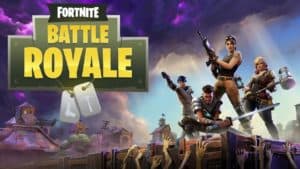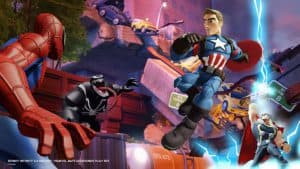Platforms PC, Playstation 4
Developer Wander MMO Publisher Wander MMO
Genre Open World MMO Platform Played on PC
When one thinks of what an MMO is, many thoughts may run through their head, but combat is always a feature that people will instinctively mention. Wander breaks this mold by removing violence and placing the focus solely on exploration and interaction with other players. It may seem like a foreign concept to many, and admittedly the first hour or so of the game does not explain much, but the title opens up significantly more after that and offers a gorgeous environment for players to explore at their leisure. Wander is easily the most appropriately named title in recent memory, as that is exactly what you will spend the entirety of your game time doing.
At the beginning of the game, every player begins their journey as an Oren, a walking tree entity capable of covering ground at a significant pace thanks largely to its size. Walking down the single path in front of you, the basic game mechanics are introduced and it affords players the opportunity to bask in the features all around them from the gorgeous forests to the background sounds of life all around, even though at no point in the title do you come across NPC creatures creating these sounds. Eventually players will find stones embedded in the ground which either act as audiologs and offer insight to the cultures or beliefs of the island’s inhabitants, or will have a rune/glyph marking on them and serve as a lesson on how to speak the in-game language of Rozhda. The language allows players who may not speak the same native language to communicate on some level. Examples of the glyphs learned through these stones are “River,” “No,” “Yes,” “North,” and “Transform stone.” Unfortunately, the execution of these glyphs when trying to communicate leaves something to be desired. While a mouse or the touchpad on a Dualshock 4 may be used when communicating, the player must draw the glyphs in a specific manner and a degree of precision is necessary. There is some room for error, but I generally found myself having to draw the symbol three or four times before my character actually said the word. If unaware that you can scroll through your list of unlocked glyphs, you may find yourself confused as to where your previous unlocked symbols have gone. The scroll wheel on your mouse or the d-pad on your controller can be used to scroll through your list, although the initial appearance of a shortened list may seem disheartening.
In regards to the environment, the game itself takes place in 64 square kilometers. This is a combination of both water and land, with lorestones and vocabulary found spread across that distance. There are stones on the sea floor, in caves, in man-made shelters, and out in the open. In addition to providing some information on the various cultures and races of the island, the lorestones also offer hints to the player. Specific stones allow players to transform into other species, and while there are no indicators pointing you towards them, as you near these stones, there is a noticeable focus on that particular species in surrounding lorestones. Generally there will also be opera singing which gets louder as you near the stone, although there were times when I found this function was not working properly. Logic also aids in finding these transformation stones, as certain creatures are more likely to inhabit specific areas of the world. You will not find a griffin transformation stone under the water, nor will you find a transformation stone for the amphibious Azertash atop a mountain. After accessing a transformation stone, the player is able to freely switch between that form and any others they have already located. The Oren is unlocked by default, the Hira is a tiny humanoid with fins, allowing it to glide through the air and swim, the Azertash is the aforementioned amphibious creature which can swim more efficiently than the Hira, and the griffin is capable of flying, effectively granting access to the floating island in the sky.
While exploring the world, there were a few hiccups encountered, with varying degrees of severity. The most frustrating was the darkness of caves you can explore. Early on in the title you gain the ability to summon fireflies and they may illuminate your path at night or in dark areas. However, they did not work while exploring caves, and instead I was forced to navigate the dark using only glowing plants and vague shadows as guides. The entrance and surrounding area of a cave will light up as if you were outside while you are turned towards the cave entrance, but it will quickly return to complete darkness the second you turn your gaze from it, leaving you blind once more. Climbing stairs while in the Oren form is also irritating at times. Due to the lumbering size of the form, the feet will not necessarily be planted firmly on a staircase, but it would appear that way until you reach the halfway point and suddenly find you cannot progress any further up the staircase. The only option available at that moment is to return to the base of the stairs, realign yourself, and begin your ascent again. Something I initially believed to be a humourous glitch but turned out to be completely intentional is a water-filled building which allows the player to swim to the very top of it. The building’s interior is only accessible via an underwater passage built by the Azertash, and as they are an aquatic species, have opted to fill the entirety of the building with water in lieu of stairways. When I first experienced this, the combination of the visuals and character animations led me to believe it was a glitch, but I have since been informed that this is not the case and that the building does have a backstory to it as previously outline.
Since Wander has released, there have been patches released daily for the title, tweaking and improving certain elements and fixing bugs players encounter. As stated, I did not encounter much in the way of glaring issues. There are some quirks such as a lack of animation for lateral movement and watching as your character walks forward while you actually move sideways, but that is certainly not a game-breaking issue. The world map is also an odd subject as it does not highlight where you currently are, it simply removes the clouds from areas as you initially discover them. If you are attempting to reach a very specific point on the map, you can use waypoints, but they may not reliably appear. Conversely, there are a number of great qualities, with the most impressive aspect of the title easily being the amount of detail and attention put into the environment. Even on low graphic settings, the surface of the water looks fantastic, and on the highest graphic settings, the underwater world truly does have a life of its own. That being said, you will need to have the graphics on at least the medium setting in order to truly explore the underwater sections of the game, as selecting “low” will only highlight the ocean surface and a handful of glowing plants.
While the game is touted as an MMO, I only encountered another player in the world once, and the interaction consisted primarily of me running circles around them as an Azertash while they walked across a beach as an Oren. The other individual seemed to have no interest in so much as acknowledging my existence, but this only pointed out one of Wander‘s strengths. The title was designed to house a massive number of players simultaneously playing within the same world, but contains enough allure to keep someone playing for hours even with no signs of other life. Some may view the lack of clear plot, missions, or combat as negatives, but the result is an experience which allows the player to take from it what they wish to invest. As previously mentioned, the initial hour may not be the most exciting for players, but as more lorestones are discovered and more terrain is traversed, there is more of a desire to explore and experience the different forms you may take. Wander is not a perfectly polished game and it is certainly not a game to fit all tastes. It will more than likely be enjoyed by a small demographic of gamers and fill a niche market. It is also not a bad game and offers an enjoyable setting when you are not looking for an action-packed title and simply wish to play something leisurely. If you need to be killing something while you game or require an end-goal laid out for you rather than creating your own objectives, simply put, Wander is not a title you will enjoy. If you can appreciate a game which is not rushed and decides to stand out from the crowd by doing something different, even if not perfect, then Wander is worth checking out.
The Good
- Gorgeous environments to explore with no shortage of detail
- Lorestones offer players the choice of adding depth to the world
- Each form controls and moves in a unique manner
- Incredibly relaxing to explore
The Bad
- Limited vocabulary library for interacting with others
- Number of glitches is relatively high, even if primarily minor
- Non-combative element and lack of concrete plot or missions may cause many to pass over title
- Without substantial number of players, replay value drops significantly after map is explored



